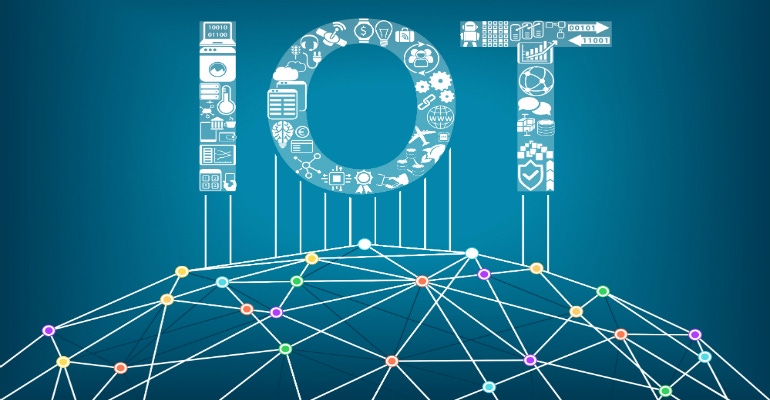Although there are clear use cases that are working and providing value, the IoT trend hasn’t yet achieved mainstream acceptance.
March 9, 2020

Sponsored by APC
Much has been written over the last several years concerning the growth and business value potential of the Internet of Things (IoT) and related trends such as edge computing. For example, Gartner forecasts that the enterprise and automotive IoT market will grow to 5.8 billion endpoints in 2020, a 21% increase from 2019. By the end of 2019, 4.8 billion endpoints are expected to be in use, up 21.5% from 2018.
However, if you take a step back, IoT development remains immature, and large-scale deployment still seems far away. Although there are clear use cases that are working and providing value, the IoT trend hasn’t yet achieved mainstream acceptance. Most hospitals, buildings, manufacturing sites and even homes have yet to implement IoT in a big way.
Evaluating the Progress of IoT among Diverse Stakeholders
I am a member of a cross-industry IoT advisory board. At our quarterly meetings, about 30 of us discuss the state of affairs as it pertains to the evolution of IoT. We share what’s happening in our space with respect to IoT, and we learn from each other. I think our meetings reflect the current evolution of the IoT trend, and I wanted to share our general observations:
IoT is bringing together a new, wider set of players from diverse backgrounds.
Our advisory group meetings are attended by the major technology players that most people would expect—IT and physical infrastructure providers such as Cisco, Dell, Schneider Electric and HP. However, some of the most influential voices are coming from smaller component suppliers (like providers of sensors and printers, small software firms and non-IT platform providers) and customers who are consuming the IoT solutions. Although the meeting attendees represent a broad swath of players, we all share the same issue: Each of us is dependent on all the others to achieve IoT deployment success.
IoT in and of itself has potential for business value creation, but all the players must work together to extract that value.
Most players agree that, as a whole, IoT opportunities can be massive. However, in many cases, if that holistic opportunity is analyzed piece by piece, some vendors, initially, may not see much revenue. For example, a use case was discussed that involved $20 million in revenue and 86 different vendors. For some of those vendors, like a cabling parts supplier, the IoT rollout represented only a thin $20,000 slice of that total revenue pot. Yet, without that part, and the commitment of the organization that supplies that part, the opportunity will not successfully convert into business value for the customer. On the other hand, that parts supplier also needs to realize that the scale of the initial opportunity is likely to accelerate quickly, supplying a steady and significant revenue stream in the future. The ecosystem of vendors needs to work together at a more intense level than is traditional to achieve the anticipated success of both the client and the vendors.
The way collaboration occurs and is executed must be simplified to drive efficiencies.
Most IoT deployments involve a high level of complexity from both an integration and coordination standpoint. The current gap, however, is not on the technology integration side, but in the way the collaboration between technology providers occurs. The management of the relationships that enable the delivery of the various parts and pieces is critical. Consider, for example, the specific area of contracts. Traditional drafting of contracts between two large entities can take weeks and months. These robust legal agreements address all the different types of engagements that might happen over an extended period. In an IoT world, lightweight, rapid execution contracts are needed. Experiments involving new micro-contracts are taking place. These are contracts that are quickly drafted to address only the specific activity between vendors that needs to be executed. This allows the players involved to move rapidly to the next set of requirements, involving yet another set of vendors, that need to be collaboratively fulfilled. Therefore, in a collaboration-intensive IoT solutions environment, even the simple exchange of monies requires a new and unique approach.
Contributions from All Players Are Needed
The process of accelerating IoT business value is complex. All key players will need to contribute. The work will require the ability to leverage the expertise of others to uncover new ideas. Our company, Schneider Electric, for example, has introduced a new, open platform called Exchange. It’s an ecosystem that combines the power of the marketplace with an active online community. Participants identify their domain of expertise, and the application allows them to display their capabilities. The system then matches them up with partners and clients who require that specific expertise. Exchange is not a channel for addressing technical support questions; it’s a problem-resolution approach that engages a community of problem solvers.
To access additional resources that can support your IoT-related implementations and provide Certainty in a Connected World, visit our edge computing page.
Jamie Bourassa is the Vice President of Edge Computing & Channel Strategy for the Secure Power Division of Schneider Electric. Jamie is responsible for enabling the Secure Power Division commercial strategy and ensuring that Schneider Electric aligns to the market evolutions related to Edge Compute, IoT, and other disruptions that increase the criticality of local computing for customers across all commercial and industrial segments. With a global career in IT Channels Strategy, Sales Operations and Offer Management, Jamie brings a unique set of competencies needed in evaluating and delivering on the current disruptions in the market.
This guest blog is part of a Channel Futures sponsorship.
Read more about:
MSPsAbout the Author(s)
You May Also Like


